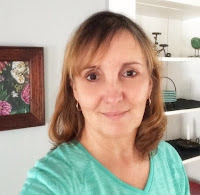Whatever business you are in - author, marketer, entrepreneur - you need a bio. In a lot of cases, it's someone's first impression of you.
Here are 5 things you need to know about writing your bio.
1. Write Several Bios. Since you use bios in different places, you'll need versions of various lengths.
- A mini one (two lines) for your byline and perhaps the first page of your website.
- A concise bio (one paragraph) to incorporate into query and pitch letters.
- A short bio (two to three paragraphs) for your blog, website, and/or book cover.
- A long bio for your media kit or when people want additional information about you.
- Bonus: A future bio: As a fun exercise, write what you want your bio to read a year from now. A future bio will help you stay focused on your aspirations.Just remember to write it in the present tense and to look at on a regular basis. (Keep it near your goals.)
Sometimes it's easy to start with the shortest bio, and then grow the different versions. I recommend beginning with the two- to three-paragraph bio. Then make the more concise versions, before expanding to the long one.
Note: If you are a multi-hyphenate, you may need alternate sets of bios with different emphases.
2. Start from Scratch. People sometimes get tripped up writing their bio, based on their resume or LinkedIn profile. A bio is not a list, it's a narrative, sharing your accomplishments, experience, and expertise.
Start by reading a previous bio or resume (as a reminder), and then do a brainstorm draft from scratch. Once you get the words out, feel free to double check and make sure you included everything. Then revise until you are comfortable with it.
3. Write After Networking. The best time to write a bio is after you have been at a networking event. You have likely spent a fair bit of time introducing yourself, so your background will be in easy-recall mode.
4. Ask Friends. Curious about which of your characteristics stand out? Ask your friends and peers. People who know and trust you will offer a unique, unbiased perspective. They will definitely come up with things that didn't occur to you.
Bonus: Add Your Headshot. No bio is complete without a photo. Don't just tell people who you are, show them. A visual cue will make you more memorable and recognizable, especially when you meet people in person who you only previously met virtually. It's an awesome feeling when people come up and introduce themselves because they know you from your picture.
When you write any bio, remember to use your own tone and style. It's another way for new people to get to know you through your words.
What tips do you have for writing a bio? Share your thoughts in the comments.
* * *
Debra Eckerling is a writer, editor and project catalyst, as well as founder of Guided Goals and Write On Online, a live and online writers’ support group.
She is the host of the Guided Goals Podcast and author of Purple Pencil Adventures: Writing Prompts for Kids of All Ages.
Debra is an editor at Social Media Examiner and a speaker/moderator on the subjects of writing, networking, goal-setting, and social media.















